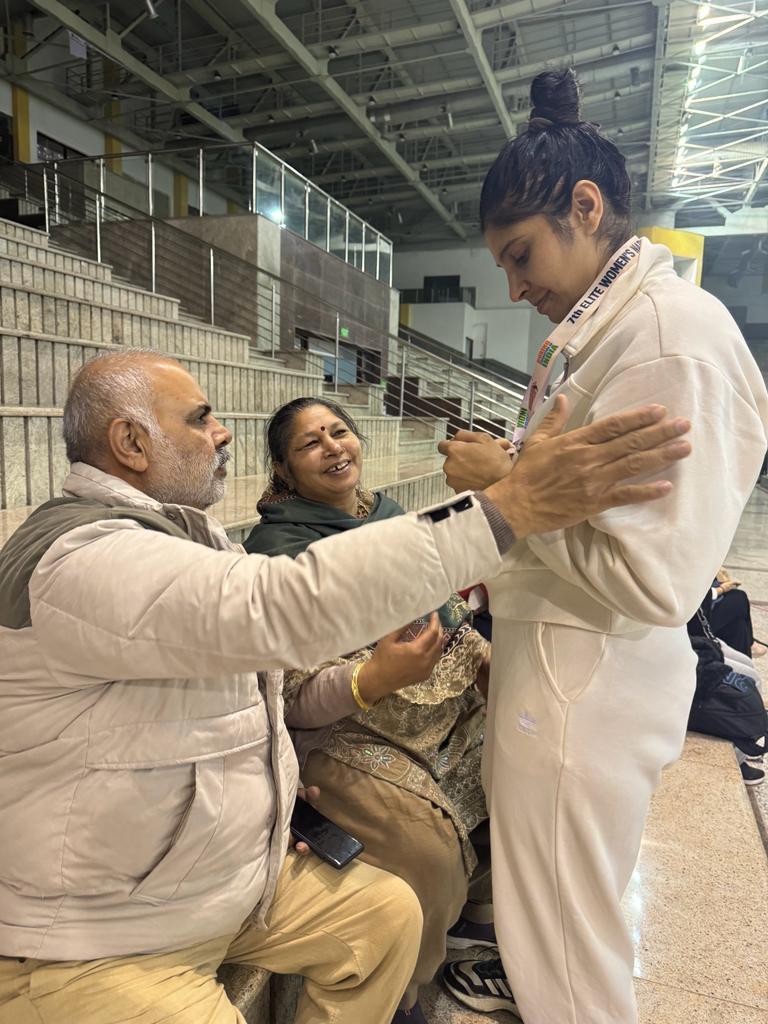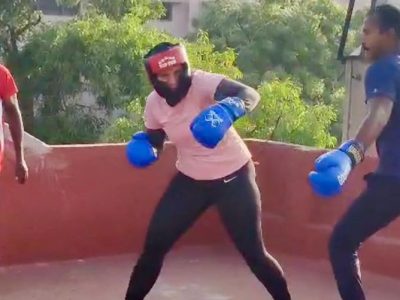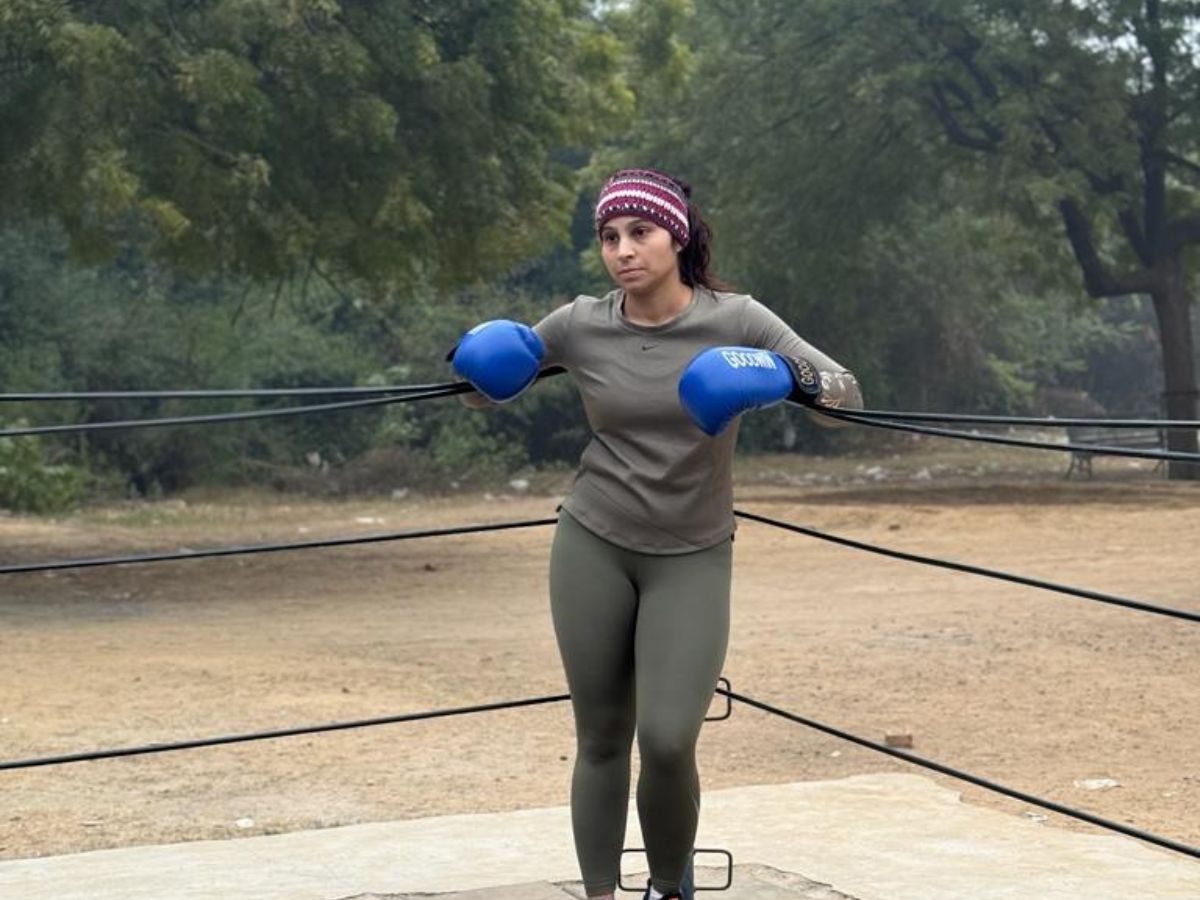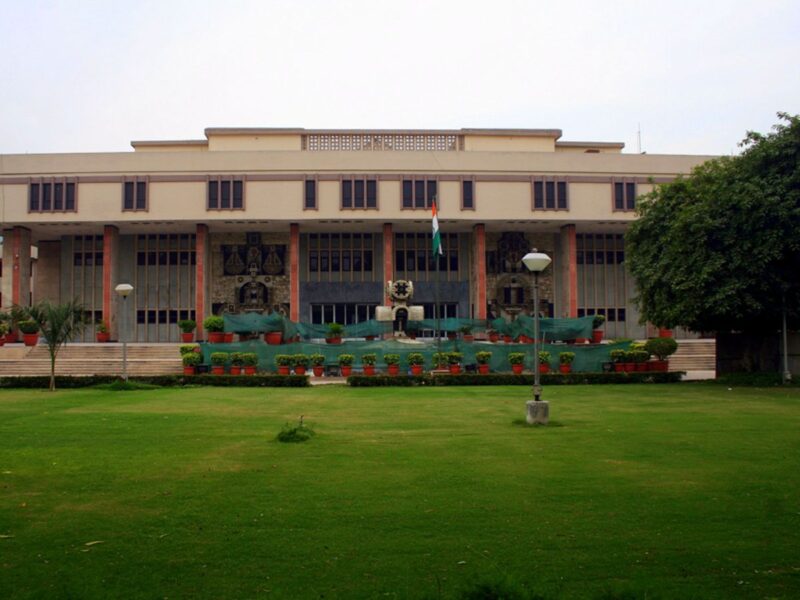Delhi’s international boxer Shalakha Sansanwal has thrown the rule book out of the window. When most female athletes plan their retirement, the 31-year-old boxer from south Delhi’s Katwaria Sarai is still going strong.
Shalakha has big plans for the future. She worked hard to earn a silver medal in the 70kg category at the just concluded seventh Elite Women’s National Boxing Championships held from December 21-27 in Greater Noida. In the 12-member Delhi team, she was the lone medal winner. Other individual boxers couldn’t even go past the quarter-finals.
“I will not stop until I achieve something big in the boxing ring,” she told Patriot after one of her morning training sessions in Delhi’s chilly winter.
Being a silver-medallist at the national meet, the boxer will get an opportunity to attend the national camp that will commence shortly.
Shalakha’s profile also depicts challenges aspiring female boxers face at the grassroots level.
Delhi is home to the Sports Ministry; Sports Authority of India (SAI), a technical arm of the sports ministry and several National Sports Federations (NSFs), yet Delhi doesn’t have good facilities for players on the fringes, Shalakha said.
“Majority of the players face uphill task in their formative years,” added the 31-year-old boxer. “There are no job opportunities either.”
Shalakha’s journey to the sporting world began at 26 in 2018 by chance. Her father is a businessman, while her elder sister is married and younger brother is studying.
“I was more into academics,” she recalled. “I was overweight and was advised by my friends to join a local gym to stay healthy.”
During her fitness training, she came across a kick-boxing event and later switched to combat sports i.e. boxing.
“I was strong. It worked in my favour. But I was technically weak inside the ring in my first year,” she added.
However, with sheer determination and individual brilliance, she has won three national medals in the last five years. She made her international debut in 2021.
“I could showcase my talent at the national level due to support from family and friends,” she added.
The inaugural edition of women’s championships was held in 2001, but “still many parents don’t want their daughters to take up boxing”.
“I was lucky my parents allowed me to pursue combat sports,” she said.
Disappointment at the national camp
The Delhi boxer rose to prominence at the state level. She was also successful in winning her first national medal, a bronze in 75kg category at the 2019 national championships. She was also shortlisted for the national camp. However, her experience in the national camp wasn’t on expected lines.
According to the Delhi boxer, she had just 18 months of playing experience and was excited to join the camp.

“I was surprised that the coaches in the camp only backed players who were ranked first and second in their respective weight categories. I was ranked fourth in my weight and didn’t get much attention in the camp,” she explained. “It was very discouraging.”
The overall system at the national camps, the Delhi boxer said, wasn’t as good as expected.
“The coaches want readymade champions to earn instant fame,” she added. “No one wanted to work on the greenhorn.”
Despite the odds, she continued to practice hard.
“I had my goals. I wanted to learn and perform better inside the ring. The urge to do better made me work hard. But it didn’t click to earn gold at the national level,” she said.
Shalakha’s second bronze at the national championships came in 2021 in the 75kg category. She was again shortlisted for the national camp. But this time she had a different experience.
“I got an opportunity to compete at the international level,” she recalled.
Since she was ranked fourth in her weight category, was accordingly given a chance to compete at the international level. The top two ranked boxers, she said, were given more quality competitions.
“I was sent to compete in an invitational boxing tournament in Kazakhstan. It was a good experience. But I lost in the quarter-finals against boxers from the host team as I wasn’t technically good,” she added.
Shalakha wasn’t lucky to win a medal at the 2022 edition of the national competition. She lost in the pre-quarters. The result wasn’t a setback.
Out of the national camp, she continued to practice. Despite meagre resources, including lack of good facilities, she followed her routine regularly.
Since there were no good facilities in her area, she had to practice on the hard cemented outdoor temporary boxing ring in her area.
A former national-level boxer and NIS (National Institute of Sports) boxing coach Harender Tiwari set up the SAI Boxing Club in Katwaria Sarai in 2010.
Despite a bare minimum facility, it still attracted school and college-going students. The club currently has 35 to 40 enthusiastic boxers in different age groups.
“We can’t make a proper boxing ring in the park where we practice as it is under the Delhi Development Authority (DDA),” said the 46-year-old boxing coach.
The temporary cemented platform was recently spruced up by Shalakha on her birthday (December 13). She contributed Rs 10,000 to improve the temporary structure and installed ropes around the cemented square platform.
“I am happy that I was able to give back something to the boxing community,” Shalakha added. “At least it will look better.”
A major disadvantage
The standard boxing ring consists of a raised wooden platform (3 to 4 feet above the ground) and a padded upper layer covered with canvas. The square has four corners that are padded and ropes encircle the ring. Former chief national women’s boxing coach Bhaskar Bhatt said it’s a disadvantage to practice on a sub-standard platform like the one Shalakha practices on.
“If boxers don’t practice on the standard size boxing ring, they often struggle during competitions and don’t perform up to potential because they aren’t used to the surface,” he added.
According to Bhatt, who oversees Rohtak’s Sports Authority of India (SAI) High Performance Centre in boxing in Haryana, practicing on hard surfaces should be avoided.
“It impacts foot-work and eventually forces the boxer to change fundamental technique,” Bhatt added.
Lack of sparring partners
There are no quality female sparring partners at the SAI Boxing Club, said Shalakha.
“During practice, my sparring partners are generally male boxers,” she said.
“It is not as productive, because male sparring partners have a guarded approach when the opponent is a female boxer.”
Bhatt throws more light on the choice of sparring partners saying it plays a vital role during preparation and match practice.
“Sparring partners are selected according to the level of opponents in the actual match.”
Having regular male sparring partners doesn’t benefit in the long run, added Bhatt.
“The male sparring partners are hesitant to give their best during practice against a female opponent, which is sort of a disadvantage,” the national coach said.
Delhi’s poor performance
Lack of good facilities and job opportunities in Delhi is said to be one of the reasons behind state women team’s performance graph going down. The Delhi women’s team won three medals, including a gold in the 2021 edition of the national competition. The team also won two bronze medals.
The following year (2022), Delhi women’s team returned empty-handed from the national meet.
In the 2023 edition held recently in Greater Noida, the Delhi team won one silver through Shalakha.
“I don’t even have a job. I am supported by my family,” said Shalakha.
Of the 35 odd students that are regular at SAI Boxing Club, there are only three girls.
“Parents don’t allow girls to take up boxing in south Delhi,” Tiwari said.
Race against time
With limited resources at her disposal, it is race against time for Shalakha. The upper age limit to compete at the international level events sanctioned by the world governing body in boxing is 40 years.
According to Bhatt, female boxers generally peak between 23 to 28 years. “It all depends on an individual,” Bhatt added. “Some continue to excel at 30 and beyond.”
Age was no bar for India’s six-time world champion and 2012 London Olympic Games bronze-medallist MC Mary Kom. A mother of three, she retired in 2022 as the maximum age limit in international boxing was 40. Mary Kom, now 41, represented India at the 2020 Tokyo Olympic Games held in Japan in 2021.
As her goal in 2023 was to improve the colour of the medal at the national level, Shalakha went to Chennai to practice for the 2023 national championships.

“I know a boxer from Tamil Nadu whose father is a boxing coach,” she said. “I went to try something different and it was very productive.”
During two weeks of practice in Chennai, the Delhi boxer said her focus was on technique.
“I am happy that I was successful in winning silver in the nationals,” said the elated Delhi boxer. “I will continue to box as I want to win medals at the international level in future.”
She has put her marriage plans on hold.
“There is pressure from family and friends, but my focus is boxing right now,” she added.





